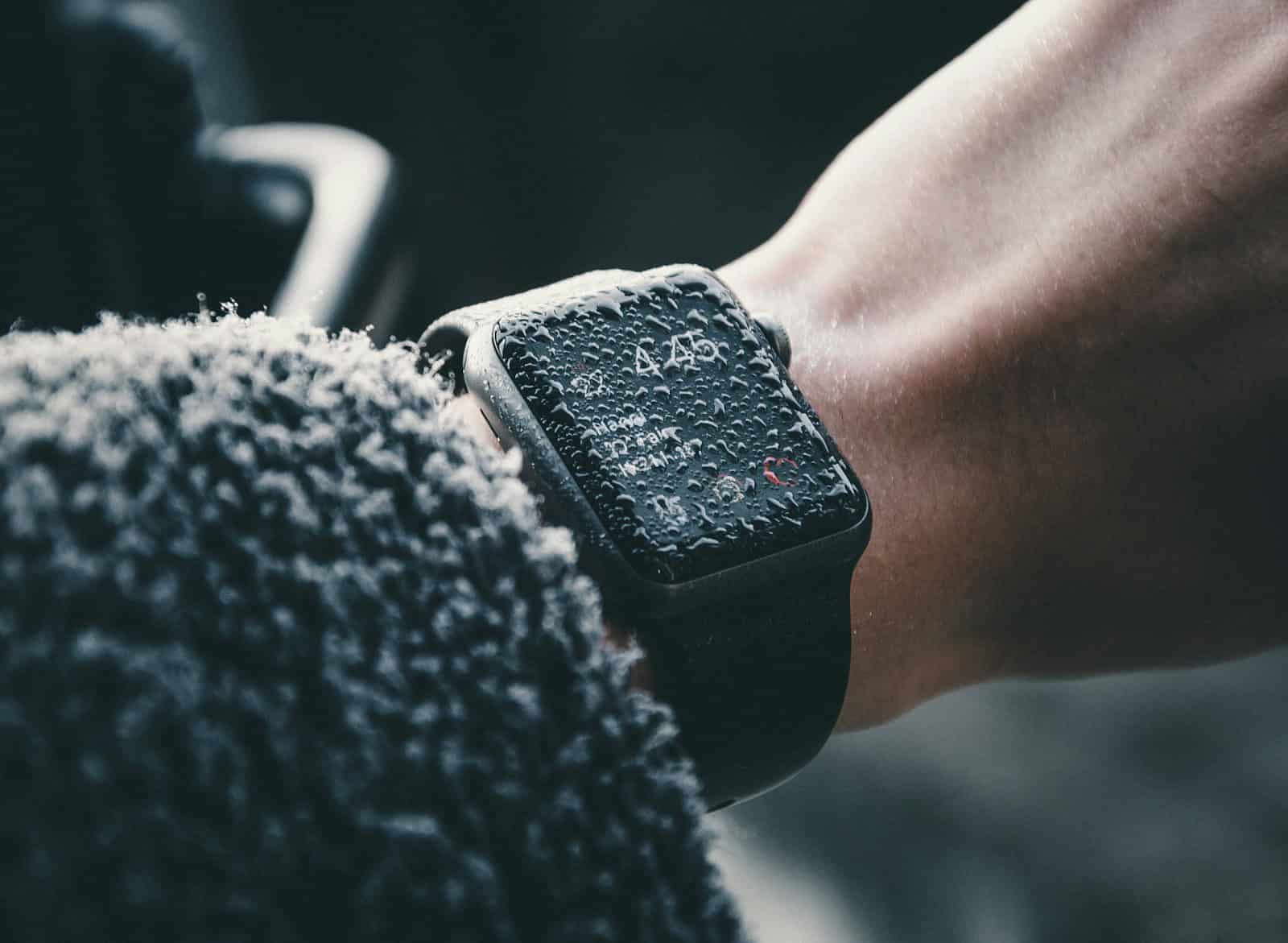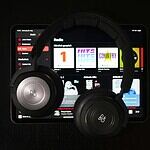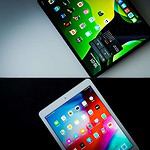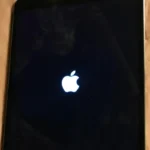Apple Watch users often ask about whether the device can handle water. Apple Watches are not waterproof but are water-resistant, meaning they can handle some exposure to water within limits. Different models of Apple Watch have varying degrees of water resistance, which affects their suitability for activities involving water. It’s important to understand the water resistance rating of your Apple Watch for its functionality and longevity.
This guide explores the water resistance ratings of different Apple Watch models, the activities they can handle, factors affecting their resistance, and essential tips for maintaining their ability to resist water. It’s important to choose the right model based on your lifestyle and use it without worrying about water damage.
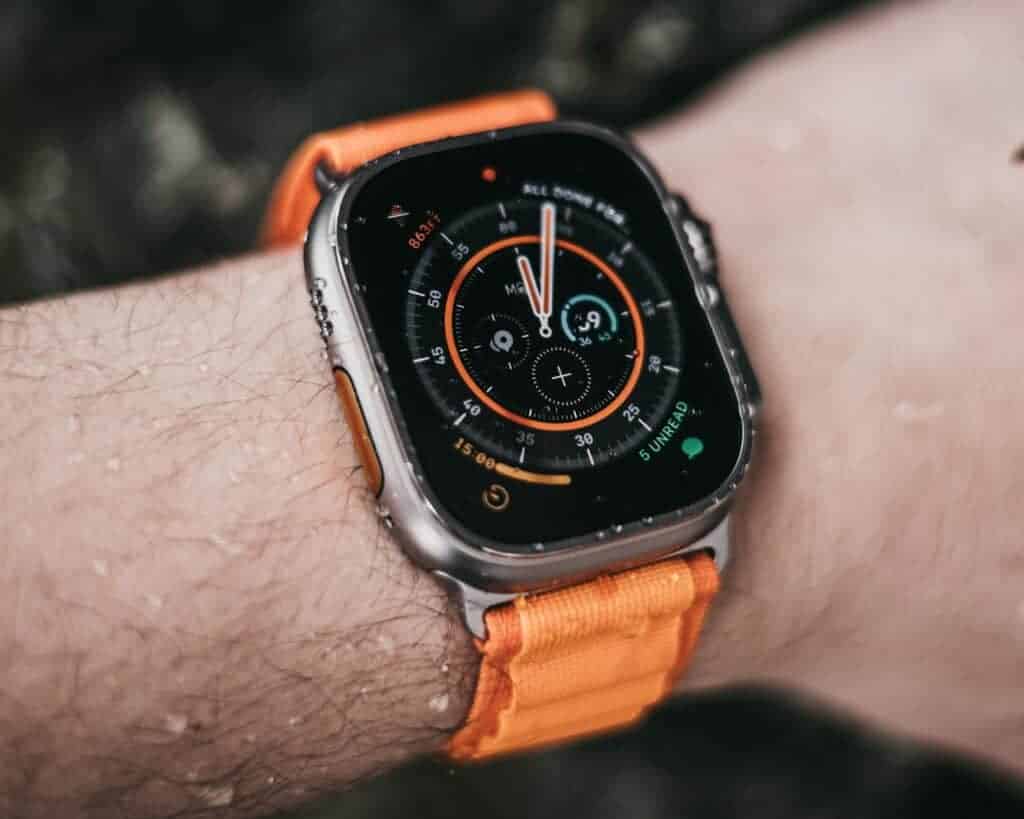
Most Apple Watch models can withstand water up to 50 meters deep, while the Apple Watch Ultra can go even deeper, to 100 meters. However, these ratings do not mean you can dive or swim at those depths with your watch – they simply show how much water pressure the device can handle. You can wear your Apple Watch while washing hands, in the rain, during workouts, and even while swimming in a pool or the ocean. However, you should avoid wearing it during high-speed water sports, in hot showers, or in saunas, as these activities can damage the watch over time.
Apple Watch Water Resistance
Apple Watch models vary in water resistance, making some suitable for swimming and diving while others are only splash resistant. Understanding these differences is crucial for choosing the right model for your lifestyle and ensuring its longevity.
Water Resistance Ratings and Activities
Apple Watch water resistance isn’t constant and decreases over time. Apple can’t recheck or reseal the watch for water resistance. Below is a table summarizing the water resistance of different Apple Watch models:
General Ratings
| Apple Watch Model | Water Resistance Rating | Suitable Activities |
|---|---|---|
| Series 1, Apple Watch (1st gen) | IPX7 (splash and water resistant) | Rain, hand washing. Avoid submerging. |
| Series 2 and later | 50 meters (ISO standard 22810:2010) | Swimming, showering. Not for diving or high-velocity water sports. |
| Series 7 and later | 50 meters, IP6X dust resistant (ISO 22810:2010) | Same as Series 2 and later, plus dust protection. |
| Apple Watch Ultra | 100 meters, EN13319 compliant, IP6X dust resistant (ISO 22810:2010) | Recreational diving (up to 40 meters), high-speed water sports, showering. |
Ratings By Watch Model Number
| Apple Watch Model | Water Resistance Rating | Activities Supported |
|---|---|---|
| Apple Watch (1st generation) | IPX7 (Splash, Rain, and Sweat Resistant) | Light workouts, handwashing, rain exposure. Not for swimming or showering. |
| Apple Watch Series 1 | IPX7 (Splash, Rain, and Sweat Resistant) | Light workouts, handwashing, rain exposure. Not for swimming or showering. |
| Apple Watch Series 2 | WR50 (Swimproof) | Swimming in shallow water, showering, most water activities. Not for scuba diving, waterskiing, or high-velocity water sports. |
| Apple Watch Series 3 | WR50 (Swimproof) | Swimming in shallow water, showering, most water activities. Not for scuba diving, waterskiing, or high-velocity water sports. |
| Apple Watch Series 4 | WR50 (Swimproof) | Swimming in shallow water, showering, most water activities. Not for scuba diving, waterskiing, or high-velocity water sports. |
| Apple Watch Series 5 | WR50 (Swimproof) | Swimming in shallow water, showering, most water activities. Not for scuba diving, waterskiing, or high-velocity water sports. |
| Apple Watch Series 6 | WR50 (Swimproof) | Swimming in shallow water, showering, most water activities. Not for scuba diving, waterskiing, or high-velocity water sports. |
| Apple Watch Series 7 | WR50 (Swimproof) | Swimming in shallow water, showering, most water activities. Not for scuba diving, waterskiing, or high-velocity water sports. |
| Apple Watch Series 8 | WR50 (Swimproof) | Swimming in shallow water, showering, most water activities. Not for scuba diving, waterskiing, or high-velocity water sports. |
| Apple Watch Series 9 | WR50 (Swimproof) | Swimming in shallow water, showering, most water activities. Not for scuba diving, waterskiing, or high-velocity water sports. |
| Apple Watch SE (1st generation) | WR50 (Swimproof) | Swimming in shallow water, showering, most water activities. Not for scuba diving, waterskiing, or high-velocity water sports. |
| Apple Watch SE (2nd generation) | WR50 (Swimproof) | Swimming in shallow water, showering, most water activities. Not for scuba diving, waterskiing, or high-velocity water sports. |
| Apple Watch Ultra | WR100 (Enhanced Swimproof) | Recreational scuba diving up to 40 meters, high-velocity water sports, all other water activities. |
| Apple Watch Ultra 2 | WR100 (Enhanced Swimproof) | Recreational scuba diving up to 40 meters, high-velocity water sports, all other water activities. |
Note:
- Water resistance is not a permanent condition and may diminish over time.
- Avoid exposing your Apple Watch to soaps, shampoos, conditioners, lotions, perfumes, and other chemicals.
- Rinse your Apple Watch with fresh water after exposure to saltwater or chlorinated water.
- Refer to Apple’s official support documentation for detailed information about water resistance and care instructions for your specific Apple Watch model.
Factors Affecting Water Resistance
Several factors can impact your Apple Watch’s water resistance, including:
- Drops or impacts
- Exposure to soap, solvents, detergents, acids, insect repellent, lotions, sunscreen, oil, or hair dye
- High-velocity water (except for Apple Watch Ultra)
- Sauna or steam room use
While accidental contact with these substances should be cleaned with fresh water, repeated exposure can damage the water seals.
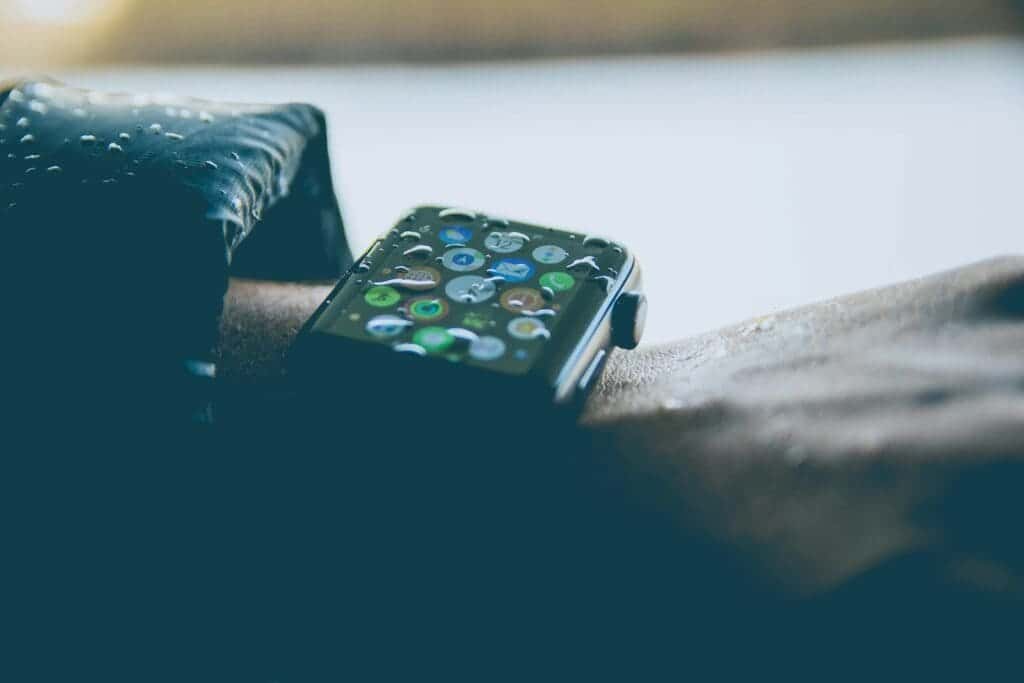
Tips for Maintaining Water Resistance
To maximize your Apple Watch’s water resistance:
- Wipe it with a non-abrasive, lint-free cloth after water exposure.
- Rinse Series 2 and later with fresh water after swimming.
- Avoid exposing it to the factors mentioned above.
- If the speaker sounds muffled after getting wet, follow Apple’s instructions to eject water.
This information is based on Apple’s official guidelines and should not be considered a substitute for professional advice. Always consult Apple Support for specific questions about your Apple Watch model’s water resistance.
Can Your Apple Watch Get Wet?
Yes, Apple Watches from Series 2 onward are designed to resist water, not just splashes. This means they can handle rain, hand washing, showering, swimming, and even some water sports. However, the level of water resistance varies across models, so it’s crucial to know your specific model’s capabilities.
What to Do If Your Apple Watch Gets Wet
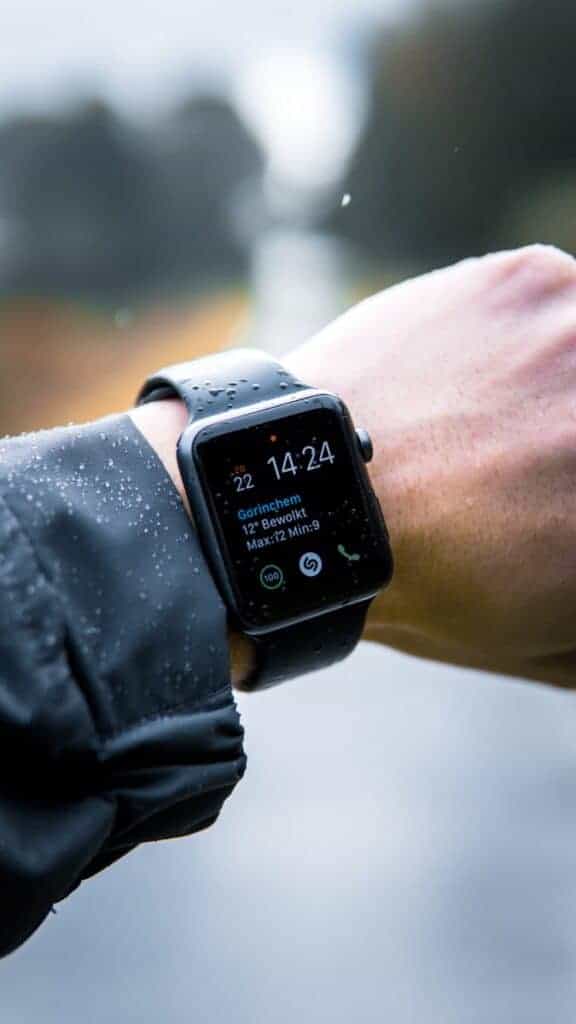
If your Apple Watch gets wet, simply wipe it dry with a non-abrasive, lint-free cloth. For Series 2 and later models, after swimming, rinse it with fresh water and then dry it. If the speaker sounds muffled, follow Apple’s instructions to eject water.
Can You Shower with Your Apple Watch On?
Yes, you can shower with Apple Watch Series 2 and later models, including Series 7, 8, 9, and Apple Watch Ultra. The water resistance of these models is designed to withstand showering. However, avoid using hot water and soap, as these can degrade the water resistance over time.
H3:Is the Apple Watch Series 8 or Series 9 Waterproof?
Neither the Apple Watch Series 8 nor Series 9 is entirely waterproof. They are water resistant up to 50 meters, which means they can handle swimming and showering, but not deep-water activities like scuba diving.
Is the Apple Watch Ultra or Ultra 2 Waterproof?
The Apple Watch Ultra models boast superior water resistance compared to other Apple Watch models. They are water resistant up to 100 meters and certified for recreational diving up to 40 meters. However, even the Ultra is not entirely waterproof and should not be subjected to extreme depths or high-pressure water activities beyond its specifications.
What Does Water Lock Do on Apple Watch?
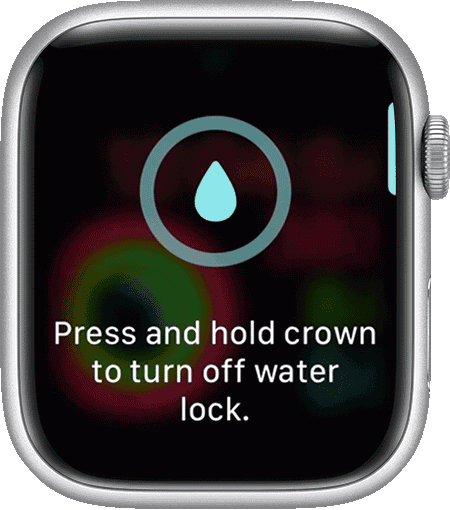
Water Lock is a feature on Apple Watch Series 2 and later that locks the screen to prevent accidental touches while you’re in the water. It also activates a special mode that uses sound vibrations to eject water from the speaker after your activity. You can enable Water Lock manually by swiping up from the bottom of the watch face and tapping the water drop icon, or it will automatically activate when you start a swimming workout.
Key Takeaways
- Apple Watches are water-resistant up to 50 meters for most models
- You can swim and shower with your Apple Watch on
- Avoid hot water and high-speed water activities with your watch
Understanding Water Resistance Ratings
Water resistance ratings tell us how well a watch can handle water exposure. These ratings use specific standards to measure protection against moisture and submersion.
Explaining the IP and ISO Ratings
IP ratings show how well devices resist water and dust. The first number is for dust protection. The second is for water. IPX7 means a device can survive being in 1 meter of water for 30 minutes.
ISO ratings are more strict. They test watches under real-world conditions. ISO 22810:2010 is used for diving watches. It checks how watches perform when exposed to water pressure.
Watches with higher ratings can handle more water pressure. This means they can go deeper underwater.
How Apple Watch Measures Up
Apple Watch models have different water resistance levels. Series 2 and later can go down to 50 meters. This follows the ISO 22810:2010 standard.
The Apple Watch Ultra is even tougher. It can go to 100 meters deep. It also meets the EN13319 standard for diving equipment.
Newer models like Series 7 are IP6X dust resistant too. This means they keep out tiny dust particles.
Limitations of Water Resistance
Water resistance doesn’t last forever. It can weaken over time. Watches may lose their protection as they get older.
Some activities can harm water resistance:
• Dropping the watch
• Exposing it to soap or chemicals
• Using it in hot showers or saunas
Water pressure increases as you go deeper. A watch rated for 50 meters isn’t meant for scuba diving. It’s best for swimming near the surface.
Always check your watch’s rating before using it in water. Follow Apple’s care instructions to keep it working well.
Practical Guidance on Water Exposure
Apple Watches can handle water in many situations. But users need to know how to care for their watch and use its features safely around water.
General Wear and Water Activities
Apple Watches are safe for swimming in pools and oceans. You can wear them in the shower too. But avoid soap, shampoo, and other chemicals. These can harm the water seals.
For water sports, use the Water Lock feature. It stops the screen from responding to water drops. To turn it on, swipe up and tap the water droplet icon. After your activity, turn the Digital Crown to unlock and clear water from the speaker.
Don’t wear your watch for scuba diving or water skiing. High-speed water impact can damage it. Stick to surface swimming and shallow diving.
Maintaining Your Apple Watch’s Water Resistance
Clean your watch often to keep it working well in water. Rinse it with fresh water after swimming in salt water or pools. Use a soft, lint-free cloth to dry it.
Check your watch band type. Leather bands aren’t good for water. Use a sport band for water activities.
Over time, water resistance can fade. Avoid drops, hits, and extreme heat. These can break the seals that keep water out.
If water gets inside, don’t charge your watch. Let it dry completely first. You can use the speaker to eject water if needed.
Apple Watch Features for Water Activities
The Workout app has a swimming mode. It tracks laps, distance, and calories burned. The app knows what stroke you’re using too.
Water Lock turns on by itself when you start a swim workout. This keeps your screen from responding to water drops.
Some models have a depth gauge for diving. It shows how deep you are and water temperature. But remember, Apple Watches aren’t for deep diving.
After swimming, your watch will show a summary. You’ll see your workout stats and heart rate data. This helps you track your progress over time.
Frequently Asked Questions
Apple Watches have different water resistance ratings. Some models can handle swimming while others are only splash-resistant. Here are answers to common questions about Apple Watch water resistance.
What is the water resistance rating of the Apple Watch Series 8?
The Apple Watch Series 8 has a water resistance rating of 50 meters. This means it can be used for shallow-water activities like swimming in a pool or ocean. It’s not suitable for scuba diving or high-speed water sports.
Can the Apple Watch SE be worn while swimming?
Yes, the Apple Watch SE can be worn while swimming. It has the same 50-meter water resistance rating as the Series 8. You can swim laps in a pool or take it in the ocean. Remember to rinse it with fresh water after swimming in salt water.
Are all Apple Watches waterproof or just water-resistant?
No Apple Watches are fully waterproof. They are water-resistant to different degrees. Newer models (Series 2 and later) can handle swimming. Older models (original and Series 1) are only splash-resistant for things like washing hands or light rain.
How does the water resistance of the Apple Watch Series 7 compare to earlier models?
The Apple Watch Series 7 has the same 50-meter water resistance as the Series 2 through 6. This is a big upgrade from the original and Series 1, which were only splash-resistant. The Series 7 can handle swimming and shallow water use just like more recent models.
What precautions should be taken when using an Apple Watch near water?
Avoid soap, shampoo, and other chemicals when wearing your Apple Watch in water. Don’t press buttons underwater. Dry the watch after water exposure. Don’t wear it in a sauna or steam room. Check the water resistance yearly, as it may decrease over time.
Is it safe to shower with the Apple Watch Series 9?
While the Apple Watch Series 9 can handle water exposure, showering isn’t recommended. Hot water and soap can damage the water seals over time. It’s best to take off your watch before showering. If you do wear it, rinse it with fresh water after and dry it thoroughly.

